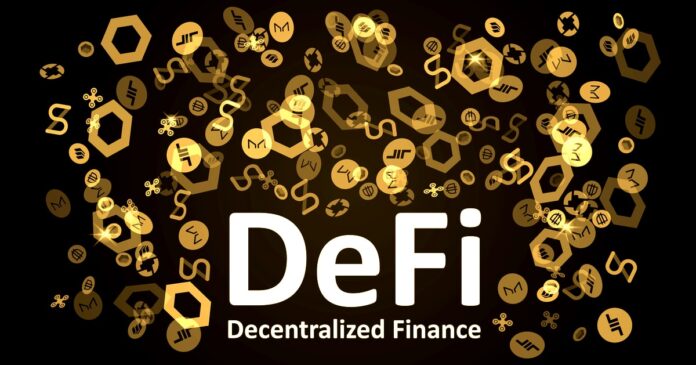Aave, a popular lending protocol in the decentralized finance (DeFi) space, has taken action to mitigate the impact of recent price volatility in the stablecoin market. On March 11, the price of USD Coin (USDC), a commonly used stablecoin, depegged, leading to concerns over the stability of other stablecoins. In response, Aave has temporarily frozen trading of stablecoins and set the loan-to-value (LTV) ratio to zero.
The decision to freeze trading was based on an analysis by Gauntlet Network, a DeFi risk management firm, which recommended a temporary pause of all v2 and v3 markets. Aave’s governance forum noted that setting the LTV ratio to zero would “discount the borrowing power of the asset” without affecting the health factor (HF) of any user position. The HF is a measure of the risk associated with a user’s position on the Aave platform.
The LTV ratio is an important metric for determining the amount of credit that can be secured using crypto as collateral. When a user borrows funds on the Aave platform, they must put up collateral in the form of crypto assets. The LTV ratio is calculated by dividing the amount of credit borrowed by the value of the collateral. A higher LTV ratio means that a user can borrow more funds with less collateral, but it also increases the risk of liquidation if the value of the collateral decreases.
By setting the LTV ratio to zero, Aave has effectively suspended all borrowing against stablecoins. This move is designed to protect users from the risk of liquidation during a period of heightened volatility. However, it also means that users who have already borrowed funds using stablecoins as collateral will need to find alternative sources of collateral or risk having their positions liquidated.
The decision to freeze trading of stablecoins on Aave also highlights the growing importance of stablecoins in the DeFi ecosystem. Stablecoins are designed to maintain a stable value relative to a particular currency or asset, such as the US dollar or gold. They are commonly used as a form of collateral on DeFi platforms, allowing users to borrow and lend funds without being exposed to the volatility of other cryptocurrencies.
However, as the recent depegging of USDC demonstrates, stablecoins are not immune to price volatility. This can create risks for users who rely on stablecoins as collateral, as a sudden drop in value can trigger liquidations and result in the loss of funds. Aave’s decision to freeze trading of stablecoins and set the LTV ratio to zero highlights the need for greater risk management measures in the DeFi ecosystem.
In conclusion, Aave’s decision to freeze stablecoin trading and set the LTV ratio to zero is a response to the recent price volatility in the stablecoin market. The move is designed to protect users from the risk of liquidation during a period of heightened volatility but also means that users who have already borrowed funds using stablecoins as collateral will need to find alternative sources of collateral. This decision underscores the importance of stablecoins in the DeFi ecosystem and the need for effective risk management measures to protect users. Stablecoins play a crucial role in DeFi by providing a stable asset that can be used as collateral for loans and other financial activities. However, as Aave’s decision demonstrates, stablecoins are not immune to price volatility and can create risks for users if their value suddenly drops.
To address these risks, DeFi platforms like Aave need to implement effective risk management measures that can help protect users from the impact of market volatility. This includes setting appropriate LTV ratios that balance the need for collateral with the risk of liquidation, as well as monitoring the market for signs of instability.
In addition to risk management measures, there is also a need for greater transparency and accountability in the DeFi ecosystem. Users need to be able to trust that the platforms they are using are safe and secure, and that their funds are protected from theft or other forms of loss. This requires clear and transparent reporting of platform performance, as well as robust security measures to prevent hacks and other forms of cyber-attacks.
Overall, the recent decision by Aave to freeze stablecoin trading and set the LTV ratio to zero is a reminder of the risks associated with stablecoins in the DeFi ecosystem. While stablecoins can provide a stable asset for collateral, they are not immune to market volatility and can create risks for users. To address these risks, DeFi platforms must implement effective risk management measures and ensure transparency and accountability in their operations. By doing so, they can help build trust and confidence in the DeFi ecosystem and promote its continued growth and development.
Credit: Source link






















 Bitcoin
Bitcoin  Ethereum
Ethereum  XRP
XRP  Tether
Tether  Solana
Solana  USDC
USDC  Dogecoin
Dogecoin  Cardano
Cardano  Lido Staked Ether
Lido Staked Ether  TRON
TRON  Wrapped Bitcoin
Wrapped Bitcoin  Wrapped stETH
Wrapped stETH  Chainlink
Chainlink  Avalanche
Avalanche  Sui
Sui  Stellar
Stellar  Litecoin
Litecoin  Toncoin
Toncoin  Shiba Inu
Shiba Inu  Hedera
Hedera  LEO Token
LEO Token  USDS
USDS  Hyperliquid
Hyperliquid  Polkadot
Polkadot  WETH
WETH  MANTRA
MANTRA  Bitcoin Cash
Bitcoin Cash  Bitget Token
Bitget Token  Ethena USDe
Ethena USDe  Wrapped eETH
Wrapped eETH  Uniswap
Uniswap  Monero
Monero  NEAR Protocol
NEAR Protocol  Pepe
Pepe  WhiteBIT Coin
WhiteBIT Coin  Aave
Aave  Ondo
Ondo  Bittensor
Bittensor  Aptos
Aptos  Internet Computer
Internet Computer  Dai
Dai  Official Trump
Official Trump  Mantle
Mantle  Ethereum Classic
Ethereum Classic  Tokenize Xchange
Tokenize Xchange  OKB
OKB  Gate
Gate  sUSDS
sUSDS  Coinbase Wrapped BTC
Coinbase Wrapped BTC 
